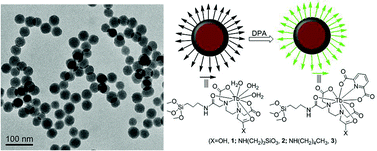Abstract
Lanthanide luminescence is a common method for the detection of

- This article is part of the themed collection: Inorganic nanoparticles for biological sensing, imaging and therapeutics
* Corresponding authors
a
Department of Chemistry, CB#3290, University of North Carolina, Chapel Hill, NC, USA
E-mail:
wlin@unc.edu
Fax: +1 (1)919 962 2388
Tel: +1 (1)919 962 6320
Lanthanide luminescence is a common method for the detection of

 Please wait while we load your content...
Something went wrong. Try again?
Please wait while we load your content...
Something went wrong. Try again?
K. M. L. Taylor and W. Lin, J. Mater. Chem., 2009, 19, 6418 DOI: 10.1039/B900866G
To request permission to reproduce material from this article, please go to the Copyright Clearance Center request page.
If you are an author contributing to an RSC publication, you do not need to request permission provided correct acknowledgement is given.
If you are the author of this article, you do not need to request permission to reproduce figures and diagrams provided correct acknowledgement is given. If you want to reproduce the whole article in a third-party publication (excluding your thesis/dissertation for which permission is not required) please go to the Copyright Clearance Center request page.
Read more about how to correctly acknowledge RSC content.
 Fetching data from CrossRef.
Fetching data from CrossRef.
This may take some time to load.
Loading related content
